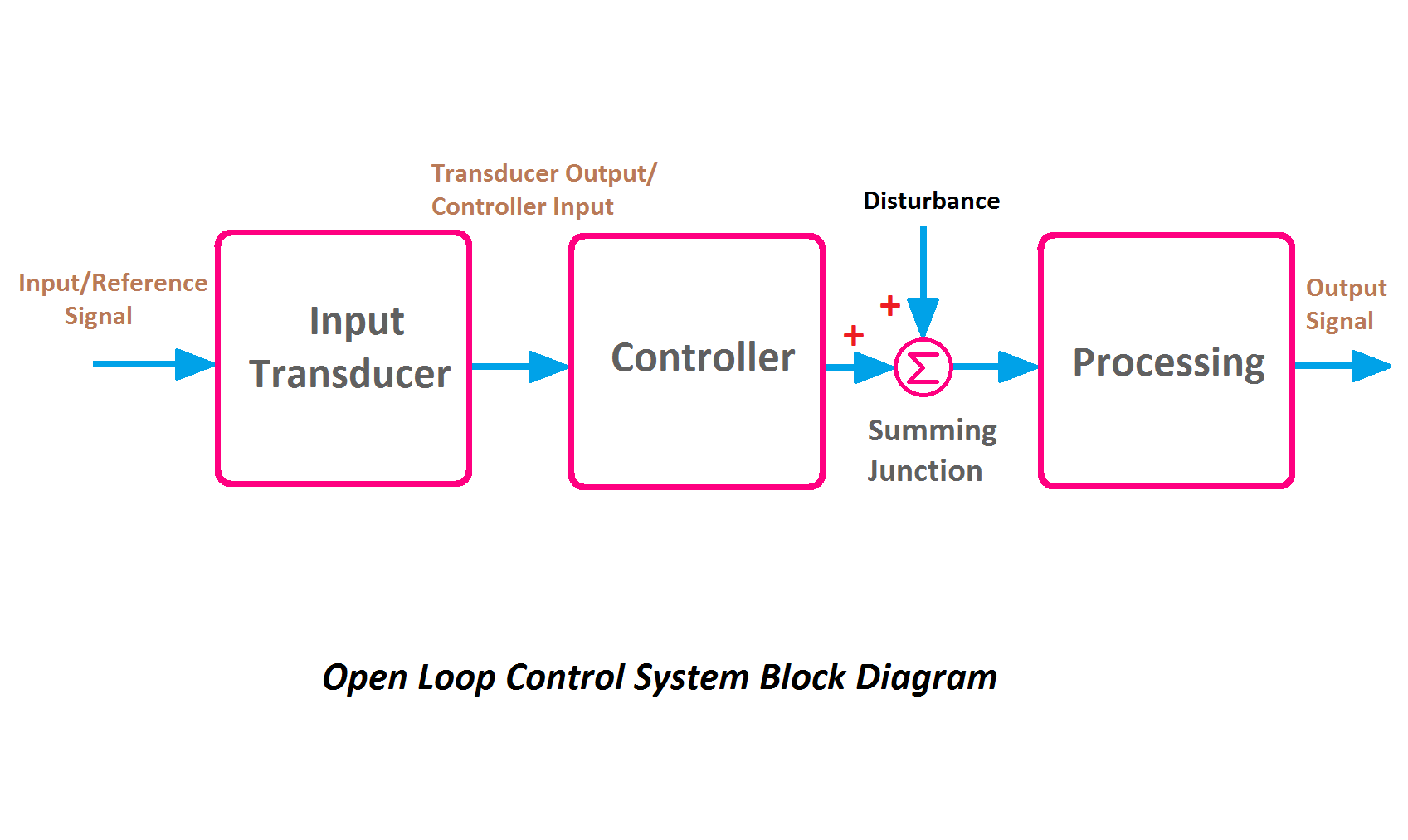Open Loop Control System Block Diagram and Working Principle
Open Loop Control system is a type of control system there is no feedback path from output to input. This control system works by controlling and processing the given input or reference signal. You can see the example of the open-loop control system in hand dryers, bread makers, TV remotes, light switches, door lock systems, etc. The main objective of an open-loop system is to accept the input signal with noise-free, control the signal with high speed and efficiency, process the signal with high accuracy, and provide the output with high stability. In an open-loop control system, the input is completely independent of the output. In this article, we are going to see the block diagram of open-loop control system and its basic working principle.
Open Loop Control System Block Diagram
Here, you can see each block with proper terms and identifications.
Input/Reference Signal
It is the actual command or instruction to the system that ensures the actual work is to be done by the system. For example, in a hand dryer when we press the switch, it gives the signal to the whole system to turn on the motor. There are both types of open-loop control systems are available means - analog and digital. Analog system takes analog input and digital system takes digital input. Some digital system takes analog input through the analog to digital converter.
Controller
The main function of the controller in an open-loop system is to control the signal in the mean of speed, reliability, flow control, direction, allocation, rejection, etc. The controller ensures the linearity or non-linearity of the system. The controller provides a very important role when the input signal just enters into the system. The controller decides which part of the input signal should go for the processing. The controller can control the flow of signals in the whole system.
Processing
The processor or processing part of an open-loop system decodes and processes the input signal or controlled signal from the controller and generates the controlled variable or output signal. A processor can process multiple signals at the same time coming from different sources. Actually, in most of the control systems, the processor allows or processes the digital signals only, so there is a need for analog to digital converter if there is an analog input. Also, it can generate digital signals only as the output signals. So, a digital to analog converter is also required if there is an analog load.
How an Open-Loop Control System Works?
The basic working principle of the open-loop system is, it takes analog-digital signal as an input. After receiving the input signal, it removes the noise and distortion from the signal. After removing the noise it controls and processes the signal and generates the output signal according to its input command or instructions. The open-loop control system has not any control over the output signal, if there is any error or mistake input command the output also be the error. As the output is not connected to the input, the input signal is independent to the output signal. Also, the open loop control system can not work in a repeating mode. We need to give input every time to get the output signal.
Read Also:

